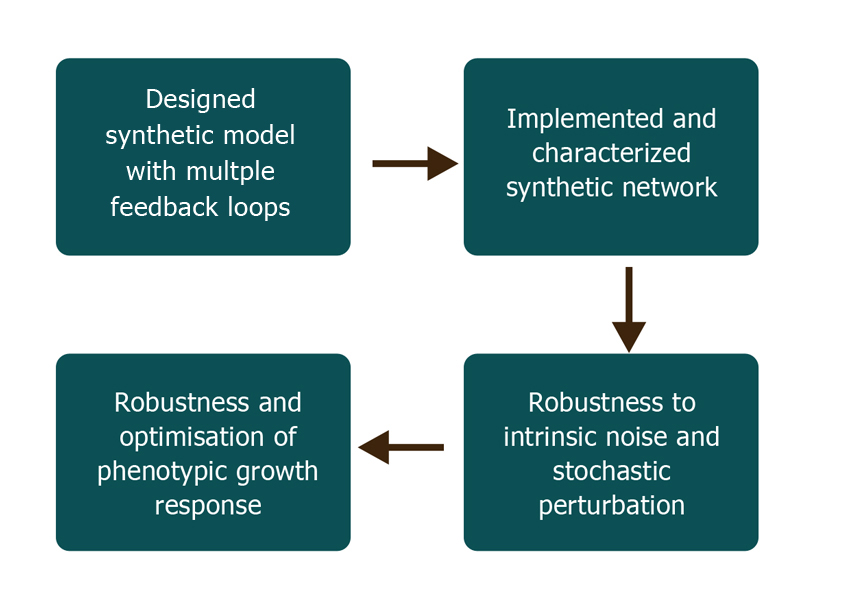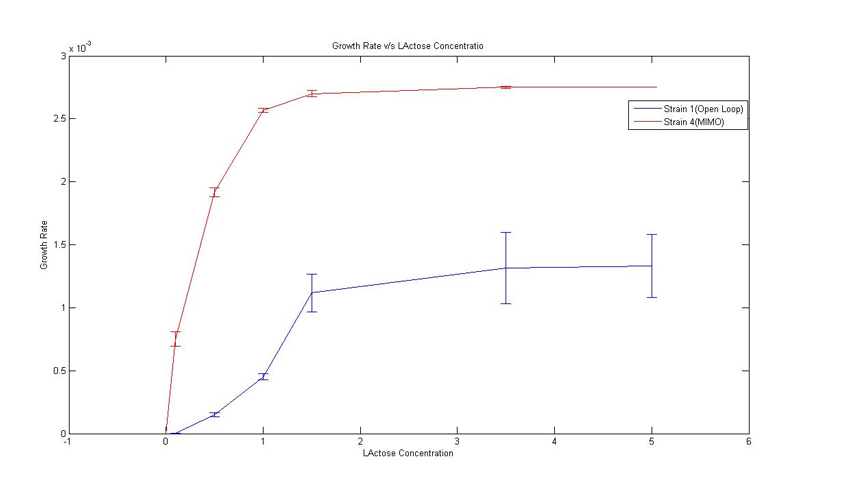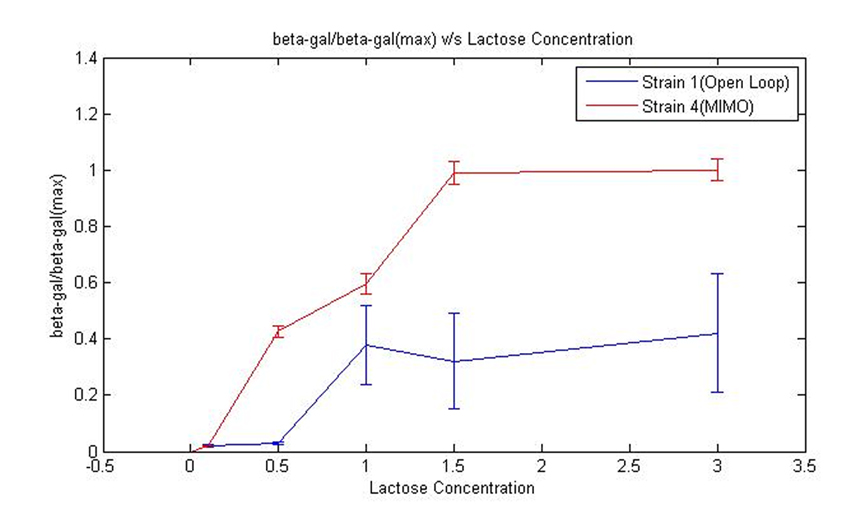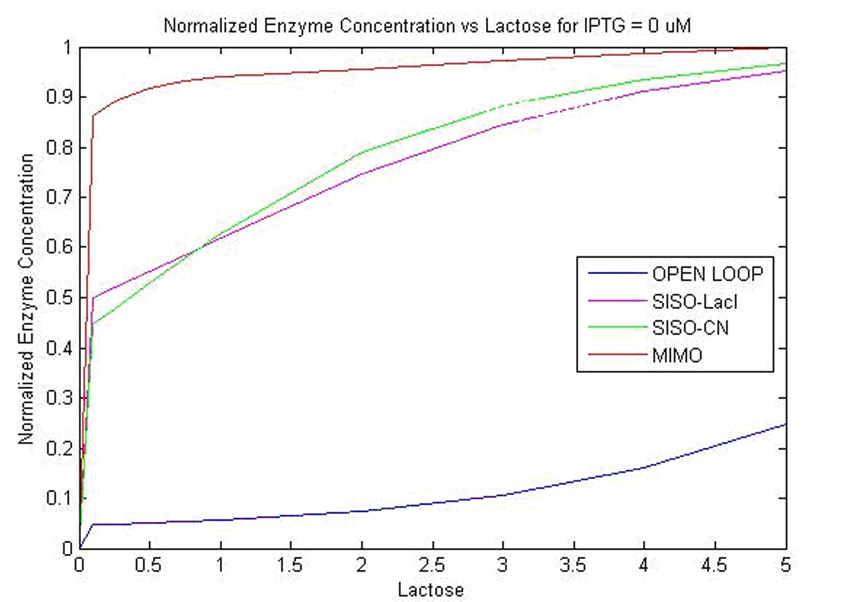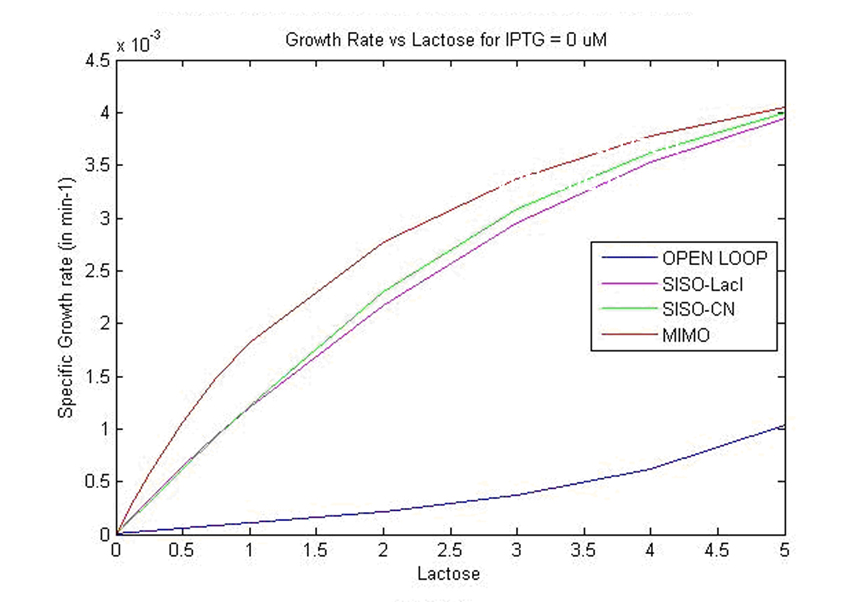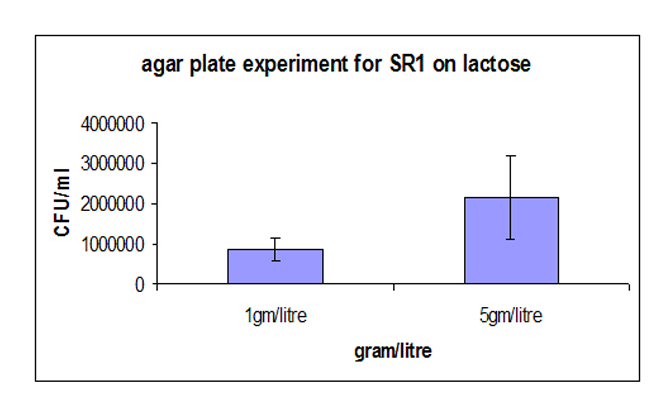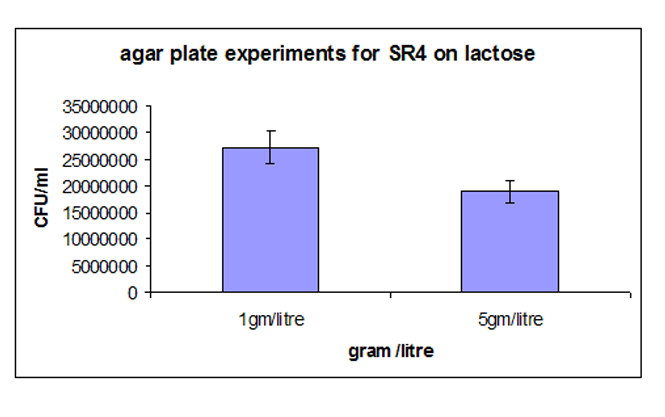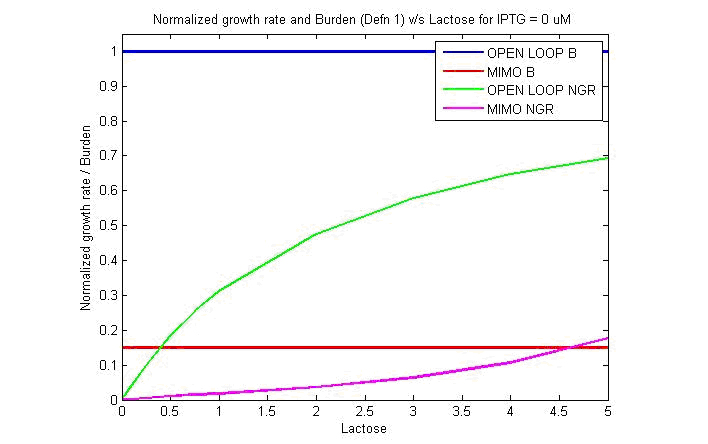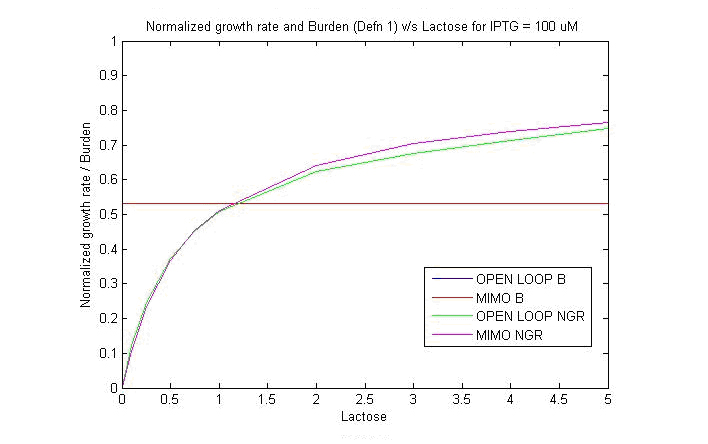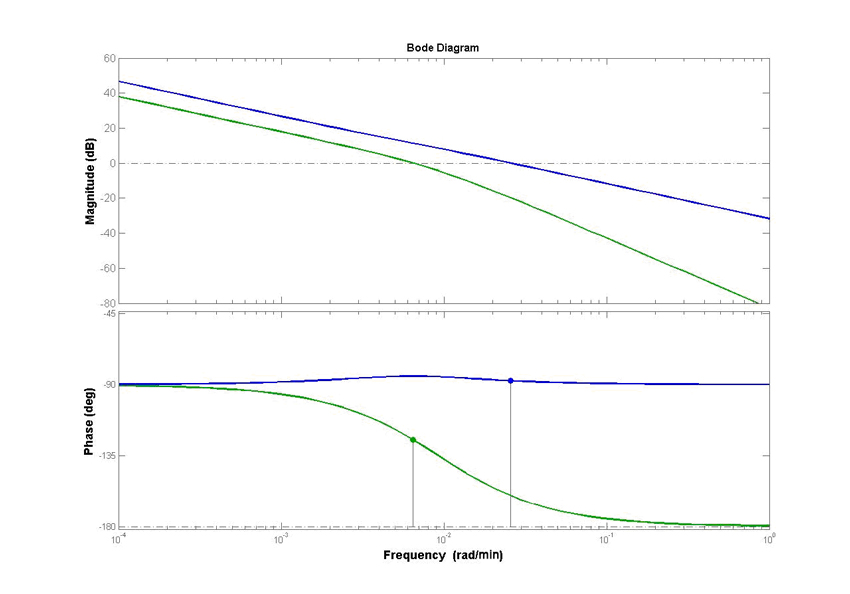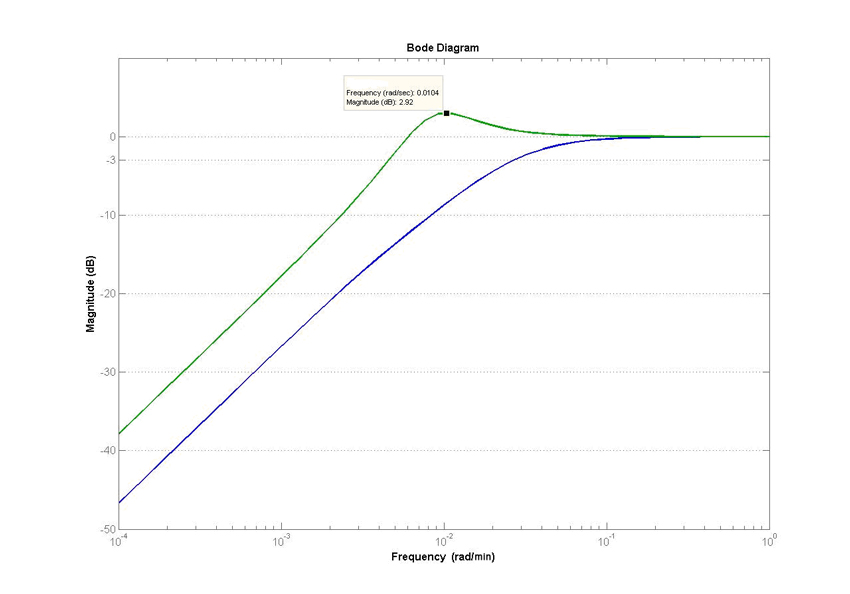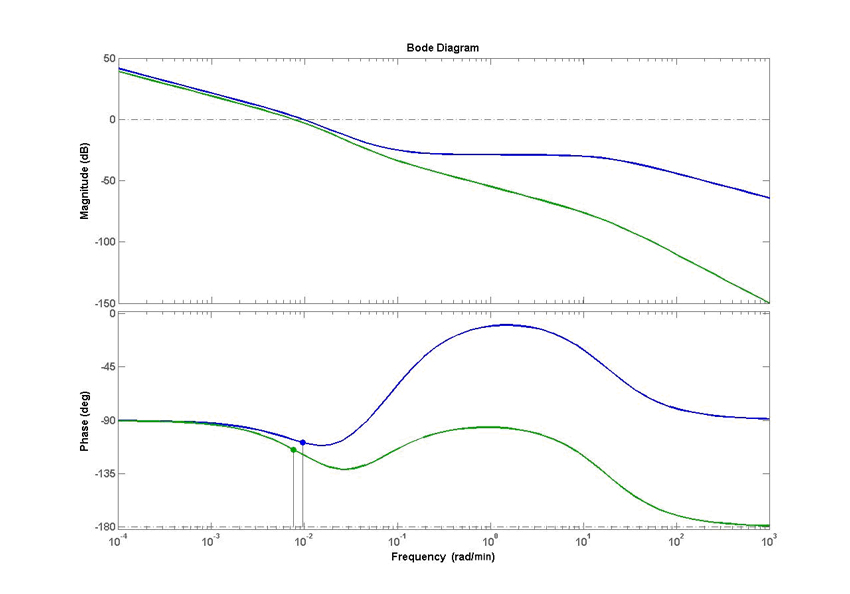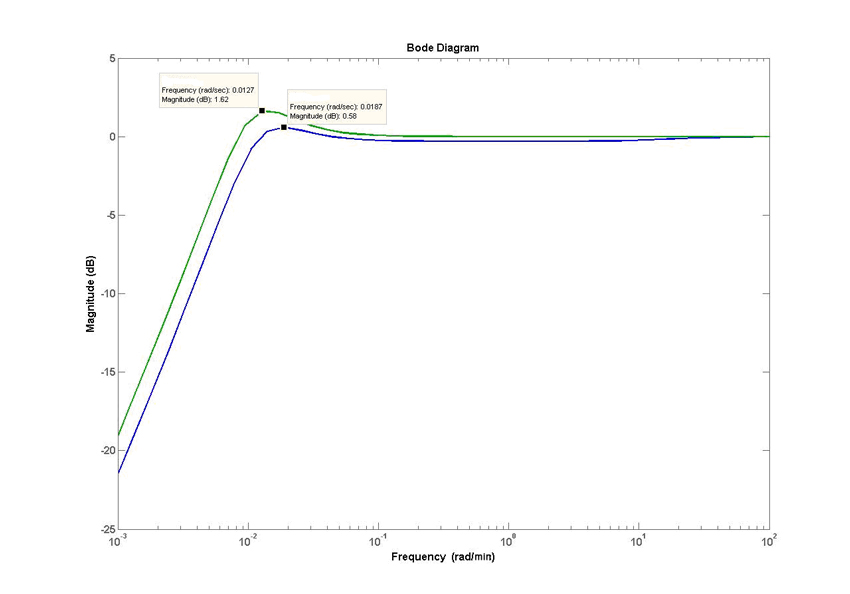Team:IIT Bombay India/Project
From 2009.igem.org
(Difference between revisions)
(→Analysis of multiple feed-backs in biological systems) |
(→Analysis of multiple feed-backs in biological systems) |
||
| (2 intermediate revisions not shown) | |||
| Line 130: | Line 130: | ||
We have done frequency response analysis on the linear system using magnitude and phase Bode plots. | We have done frequency response analysis on the linear system using magnitude and phase Bode plots. | ||
| - | [[Image: | + | [[Image:shetty2.jpg]] |
The phase margin for strain 4 is 92.2 deg while phase margin for strain 3 is 56 deg. This indicates better ability in response to delays in production of LacI and replication of copy number. | The phase margin for strain 4 is 92.2 deg while phase margin for strain 3 is 56 deg. This indicates better ability in response to delays in production of LacI and replication of copy number. | ||
Further, we have done magnitude bode plot for the sensitivity function to determine sensitivity of the system. | Further, we have done magnitude bode plot for the sensitivity function to determine sensitivity of the system. | ||
| - | [[Image: | + | [[Image:shetty3.jpg]] |
''Fig: Magnitude, phase and sensitivity bode plots for LacI system given in linear model. The green line represents Strain 3 with only C1(s), while blue line represents Strain 4 with both C1(s) and C2(s). The gain margin for both Strain 3 and Strain 4 is ∞.'' ''The phase margin is 92.2 degree for Strain 4 and 56 degree for Strain 3. The increased bandwidth from 0.00428 rad/min to 0.0255 rad/min indicates faster response and improved noise rejection.'' ''The Strain 3 has higher peak of 2.92 dB while Strain 4 has no peak, again indicating better noise-attentuation. | ''Fig: Magnitude, phase and sensitivity bode plots for LacI system given in linear model. The green line represents Strain 3 with only C1(s), while blue line represents Strain 4 with both C1(s) and C2(s). The gain margin for both Strain 3 and Strain 4 is ∞.'' ''The phase margin is 92.2 degree for Strain 4 and 56 degree for Strain 3. The increased bandwidth from 0.00428 rad/min to 0.0255 rad/min indicates faster response and improved noise rejection.'' ''The Strain 3 has higher peak of 2.92 dB while Strain 4 has no peak, again indicating better noise-attentuation. | ||
| Line 143: | Line 143: | ||
For system with 1000 µM IPTG, the magnitude and phase bode plots are given as below: | For system with 1000 µM IPTG, the magnitude and phase bode plots are given as below: | ||
| - | [[Image: | + | [[Image:shetty4.jpg]] |
The phase margin difference is not that significant. It is 70 deg for strain 4 and 64 deg for strain 3.The indicates lower degree of feedback in the system. | The phase margin difference is not that significant. It is 70 deg for strain 4 and 64 deg for strain 3.The indicates lower degree of feedback in the system. | ||
| Line 149: | Line 149: | ||
[[Image:shetty5.jpg]] | [[Image:shetty5.jpg]] | ||
| - | ''Fig: | + | ''Fig: Magnitude, phase and sensitivity bode plots for LacI system with 1000 µM IPTG for linear model'' ''The green line represents Strain 3 with only C1(s), while blue line represents Strain 4 with both C1(s) and C2(s).'' ''The gain margin for both Strain 3 and Strain 4 is ∞.'' ''The phase margin is 70 degree for Strain 4 and 64 degree for Strain 3.'' ''The bandwidth increase is not significant for Strain 4 from 0.0061 rad/min to 0.0078 rad/min indicates hardly any difference in noise rejection.'' ''The Strain 3 has higher peak of 1.62 dB while Strain 4 has a peak at 0.58 dB indicating a lower peak and a slight better performance in noise attentuation.'' |
The magnitude bode plot for the sensitivity function shows lower bandwidth of 0.0061 rad/min for strain 4 and 0.0078 rad/min. The response for strain 4 is not as fast as compared to the response for strain 4 in absence of IPTG. The response is slower in presence of high IPTG even in multiple feedback system. | The magnitude bode plot for the sensitivity function shows lower bandwidth of 0.0061 rad/min for strain 4 and 0.0078 rad/min. The response for strain 4 is not as fast as compared to the response for strain 4 in absence of IPTG. The response is slower in presence of high IPTG even in multiple feedback system. | ||
| Line 157: | Line 157: | ||
'''Conclusions''' | '''Conclusions''' | ||
| - | We characterized a phenotypic property of a cell (growth) with the help of synthetic genetic circuits. We proved that the specific growth rate on lactose was optimized in the mutant strain containing multiple feedbacks. The noise or variance associated with the protein expression of a MIMO strain was comparatively lower than that of Open loop strain containing zero feedbacks. | + | We characterized a phenotypic property of a cell (growth) with the help of synthetic genetic circuits. We proved that the specific growth rate on lactose was optimized in the mutant strain containing multiple feedbacks. The noise or variance associated with the protein expression of a MIMO strain was comparatively lower than that of Open loop strain containing zero feedbacks. We were successful in quantifying the gene expression using synthetic networks and correlate the intrinsic noise at the expression level to the phenotypic response of growth. Simulation and control analysis proved conclusively the advantages of multiple feedback to regulate inherent noise in the system. It is therefore, no surprise, that nature has evolved such a design which is observed in systems from bacteria to humans. |
Latest revision as of 03:53, 22 October 2009
| Home | The Team | The Project | Analysis | Modeling | Notebook | Safety |
|---|
Analysis of multiple feed-backs in biological systems |
 "
"

